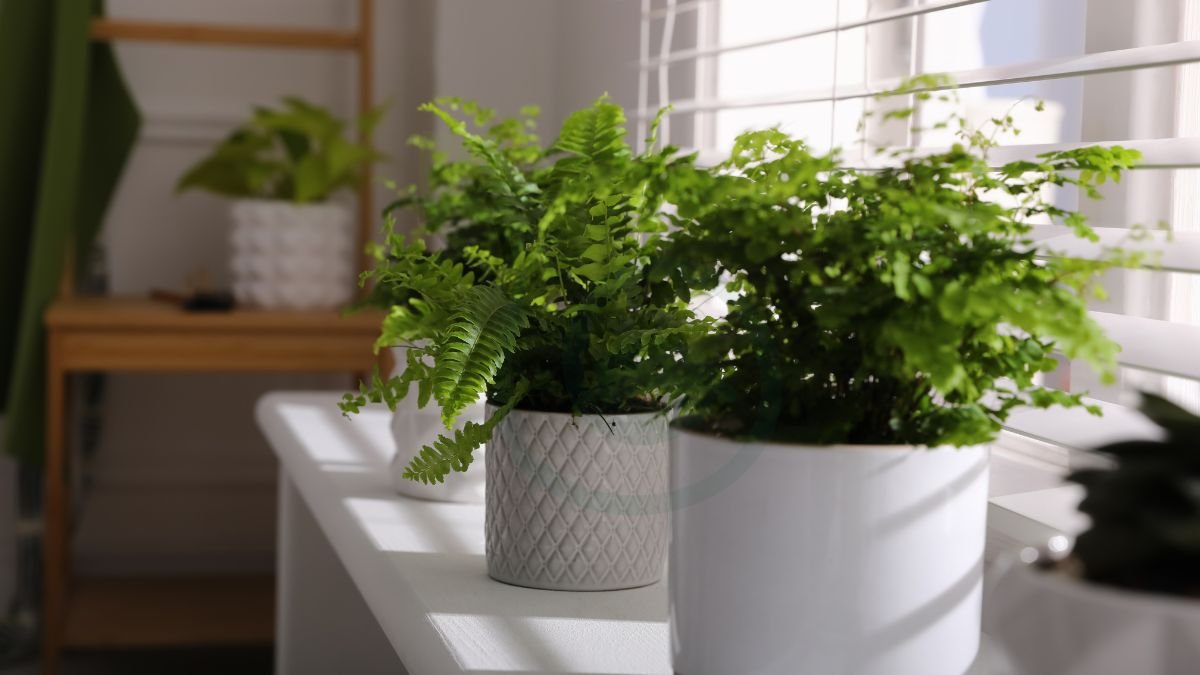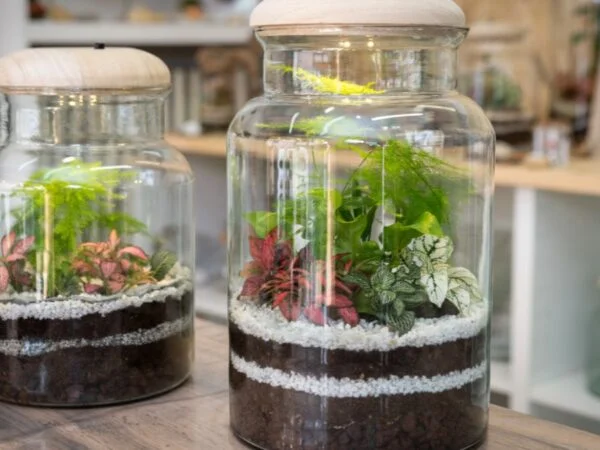Boston Ferns are exquisite plants that require proper care to thrive. If you're wondering how to care for Boston Fern, worry not, as I'll guide you through the process step by step. With the right knowledge and attention, you can ensure your Boston Fern, a green ferns indoors, grows lush and healthy in your home or garden.
To care for a Boston Fern, you'll want to provide it with indirect sunlight, consistent moisture, and a humid environment. These ferns prefer slightly acidic soil with good drainage. Keep the soil evenly moist, but not waterlogged, and mist the leaves regularly to maintain humidity. During the growing season, fertilize your Boston Fern with a balanced liquid fertilizer every two weeks. Additionally, remove any dead or yellowing fronds to promote new growth. With these simple steps, you can enjoy the beauty of a thriving Boston Fern in your living space.
If you're eager to learn more about caring for Boston Ferns, there are additional tips and tricks to explore. From propagation techniques to troubleshooting common issues, there's a wealth of knowledge available to help you become a successful Boston Fern caretaker. Keep exploring and experimenting to create the optimal environment for your fern to flourish.
Key Takeaways
- Regularly Mist and Water: Ensure to mist your Boston fern regularly to maintain humidity levels, and water consistently to keep the soil moist but not waterlogged.
- Choose the Right Potting Mix: Opt for a well-draining potting mix to prevent waterlogging, promoting healthy root growth for your Boston fern.
- Monitor Light Levels: Place your Boston fern in a spot with indirect light to avoid scorching its delicate fronds, ensuring it thrives in the right environment.
- Prune Wisely: Use sharp scissors to trim dead or yellowing fronds, promoting new growth and maintaining the overall health and appearance of your Boston fern.
- Divide and Conquer: Consider dividing your Boston fern to propagate new plants, utilizing healthy sections to expand your fern collection or share with fellow plant enthusiasts.
- Watch for Signs of Stress: Keep an eye out for common fern problems like browning fronds or pest infestations, addressing issues promptly to keep your Boston fern healthy and vibrant.
Boston Fern Essentials

Ideal Soil
Boston ferns thrive in fast-draining soil with a slightly acidic pH ranging from 5 to 5.5. This pH range mimics their natural habitat conditions, supporting optimal growth. To ensure healthy development, the soil should be rich in organic materials, providing essential nutrients for the fern's foliage. When planting Boston ferns, always opt for containers with drainage holes to prevent waterlogging and root rot.
Light Conditions
For ideal growth, position your Boston ferns in locations that receive cool morning sun. Ensure they get a minimum of a few hours of bright, filtered, or indirect light daily to support photosynthesis. While light is crucial, direct sunlight can scorch the delicate fronds; hence, it's vital to avoid prolonged exposure. On the flip side, keeping them in complete shade can hinder their growth, so finding a balance is key.
Watering Needs
Maintaining consistent moisture levels in the soil is vital for Boston ferns' health. Regular watering is necessary to keep the soil consistently moist, preventing it from drying out completely. A handy tip is to check the top inch of soil for dryness; if it feels dry to touch, it's time to water. However, overwatering can lead to root rot, so adjusting the watering frequency based on environmental factors like humidity levels is crucial.
Fertilizer Tips
During the active growing seasons of spring and summer, provide your Boston ferns with a balanced houseplant fertilizer. Following the manufacturer's instructions regarding application and dosage is essential to avoid nutrient deficiencies or excesses. Over-fertilizing can harm these delicate plants by causing leaf burn or stunted growth. Striking a balance in fertilization will help maintain lush green foliage and promote overall plant vigor.
Overwintering Ferns
Temperature Control
Maintain Boston ferns in temperatures above 55 degrees F. Keep them overwintered in cool, dark areas to shield from the cold. Ensure indoor temperatures stay within the suitable range for optimal growth.
Humidity Adjustments
Increase humidity levels for Boston ferns by using room humidifiers. Enhance moisture by placing pots on pebbles in trays filled with water. Regularly mist the plants to sustain adequate humidity levels crucial for their well-being.
Light During Winter
Provide ample light to Boston ferns throughout the winter months to support their growth. If natural light is insufficient, consider using artificial lighting sources. Monitor the fern's response and adjust light exposure accordingly to prevent any potential issues.
Types of Boston Ferns
Bostoniensis
Bostoniensis' ferns have specific care requirements that need to be understood for optimal growth. Adapt watering schedules based on the plant's moisture needs, ensuring the soil remains consistently moist but not waterlogged. Adjust lighting conditions to provide bright, indirect light without direct sun exposure. Monitor the fern's growth patterns, characterized by delicate fronds and a lush appearance.
Florida Ruffle
The 'Florida Ruffle' Boston fern stands out with its unique features that require tailored care practices. Identify the distinctive ruffled fronds of this variety and adjust watering frequency to maintain adequate moisture levels. Place the plant in a location with moderate humidity levels and ensure sufficient indirect light. Address any challenges such as leaf browning or wilting promptly.
Golden Boston
Characterized by its vibrant golden foliage, the 'Golden Boston' fern has specific care strategies that cater to its unique characteristics. Implement a watering routine that keeps the soil consistently moist but well-drained to prevent root rot. Provide ample indirect light for healthy growth and consider occasional misting to enhance humidity levels around the plant. Recognize any special considerations such as fertilization needs or temperature sensitivity.
More Varieties
Massii
The 'Massii' Boston fern boasts distinct traits that influence its care requirements. Familiarize yourself with its compact growth habit and adjust watering frequencies accordingly to prevent waterlogging. Ensure adequate air circulation around the plant to discourage pests and diseases common to this variety. Address any challenges related to maintaining humidity levels suitable for the 'Massii' fern's growth.
Rita's Gold
Discover the unique attributes of the 'Rita's Gold' Boston fern and tailor care techniques to meet its specific needs. Modify watering practices to accommodate this variety's moisture preferences, allowing the top inch of soil to dry out between waterings. Monitor for signs of nutrient deficiencies and adjust fertilization schedules as needed. Tackle any issues like leaf yellowing or stunted growth promptly to ensure the health of your 'Rita's Gold' fern.
Pruning Techniques
When to Prune
Prune Boston ferns periodically to ensure they remain healthy and visually appealing. Keep an eye out for any signs of excessive growth or damage, as these are clear indicators that pruning is needed. Establish a regular schedule for pruning sessions to encourage fresh growth.
Pruning Tools
- Essential tools for pruning Boston ferns include sharp scissors or pruning shears.
- It is crucial to maintain clean and sharp tools to avoid causing harm to the fern during the pruning process.
- Different types of pruning tasks may require specific tools, so make sure you have the right equipment on hand.
Pruning Steps
Inspect your Boston fern carefully to identify areas that need attention. Begin by trimming any dead or yellowing fronds to enhance the overall appearance of the plant. When cutting, remember to do so at an angle to stimulate healthy regrowth post-pruning.
Propagation Tips
Division Method
- Divide Boston ferns carefully to propagate new plants.
- Separate healthy sections with roots intact for successful division.
- Replant divided sections in suitable soil and containers for growth.
Spore Propagation
- Explore spore propagation as a method to multiply Boston ferns.
- Collect spores from mature fronds and sow them in a suitable medium.
- Provide optimal conditions for spore germination and growth.
Potting and Repotting
Choosing the Right Pot
When potting your Boston fern, select pots with drainage holes to prevent waterlogging issues that can lead to root rot. Ensure the chosen containers offer enough space for the plant's roots to grow freely. Consider both functionality and aesthetics when selecting the pot material.
Soil Mixture
For optimal growth, create a soil mixture with a pH level specifically tailored for Boston ferns, ideally ranging from 5 to 5.5. Blend organic materials into the mix to enrich the soil and provide essential nutrients for the plant. It is crucial to ensure that the soil mixture has good drainage properties to avoid water accumulation around the roots.
Repotting Steps
When your Boston fern begins to outgrow its current container, it's time for repotting. Carefully remove the plant from its old pot, taking care not to damage its delicate roots during the process. Inspect the roots for any signs of overcrowding or root-bound conditions. Transplant the fern into a new pot with fresh soil, ensuring proper watering post-repotting.
Common Fern Problems
Pests and Diseases
Boston ferns are susceptible to pests like spider mites and mealybugs. Treat infestations promptly with suitable solutions. Look out for signs of diseases such as root rot and powdery mildew for early detection.
Yellowing Leaves
Yellowing leaves on Boston ferns indicate underlying issues. Check for overwatering, nutrient deficiencies, or pests causing discoloration. Adjust care practices to prevent further yellowing and promote recovery.
Dropping Fronds
Investigate reasons behind frond dropping in Boston ferns. Evaluate watering, light, and humidity levels as potential causes. Take corrective measures to stabilize the fern and prevent further frond loss.
Perfect Environment
Temperature Needs
Boston ferns thrive in temperatures above 55 degrees F. Avoid exposing them to extreme temperature changes to prevent stress. Keep indoor temperatures consistent for optimal growth.
Humidity Levels
Maintain adequate humidity levels for your Boston ferns. Regularly monitor and adjust humidity using misting techniques or humidifiers. Dry air can harm the fern's health, so ensure proper moisture levels.
Extra Care Tips
Cleaning Leaves
Regularly clean the Boston fern leaves to remove dust and debris for optimal health. Use a damp cloth or a gentle water spray to ensure the foliage stays clean. Maintaining clean leaves is crucial for proper photosynthesis and overall plant well-being.
Regular Check-ups
Frequently inspect your Boston fern for any signs of issues like pests or diseases. Monitor the plant's appearance for any changes that might indicate health problems. Promptly address any concerns you notice to sustain the fern's vitality and robustness.
Closing Thoughts
You've learned how to care for your Boston ferns, from essential tips to troubleshooting common problems. By following the advice on overwintering, pruning, and propagation, you're well-equipped to keep your ferns thriving. Remember the importance of the perfect environment and extra care to ensure your plants flourish.
Now it's time to put your newfound knowledge into action. Create an optimal setting for your Boston ferns, implement the pruning techniques, and watch them grow beautifully. With these insights, you can enjoy lush, vibrant ferns that enhance your space. Keep nurturing your plants with care and attention, and they will reward you with their natural beauty.
Frequently Asked Questions
How often should I water my Boston fern?
Water your Boston fern when the top inch of the soil feels dry to the touch. Typically, this means watering every 1-2 weeks, but adjust based on your home's humidity levels and the season.
What is the best way to propagate a Boston fern?
To propagate a Boston fern, divide the plant at its rootball during repotting or use spores found on mature fronds. Plant divisions in new pots with fresh soil and keep them consistently moist until new growth appears.
How can I prevent common problems like browning fronds in my Boston fern?
Ensure your Boston fern has proper humidity levels by misting it regularly, keeping it away from drafts, and providing indirect light. Also, avoid over-fertilizing and make sure the plant is not sitting in water to prevent root rot.
Should I fertilize my Boston fern, and if so, how often?
Fertilize your Boston fern with a balanced liquid fertilizer diluted to half strength once a month during the growing season (spring and summer). Avoid fertilizing in fall and winter when the plant is dormant.
What are some signs that my Boston fern needs repotting?
If you notice roots growing out of the drainage holes, slowed growth, or the plant becoming root-bound where roots encircle the pot tightly, it's time to repot your Boston fern into a slightly larger container with fresh potting mix.
Image Source: Paid image from CANVA





